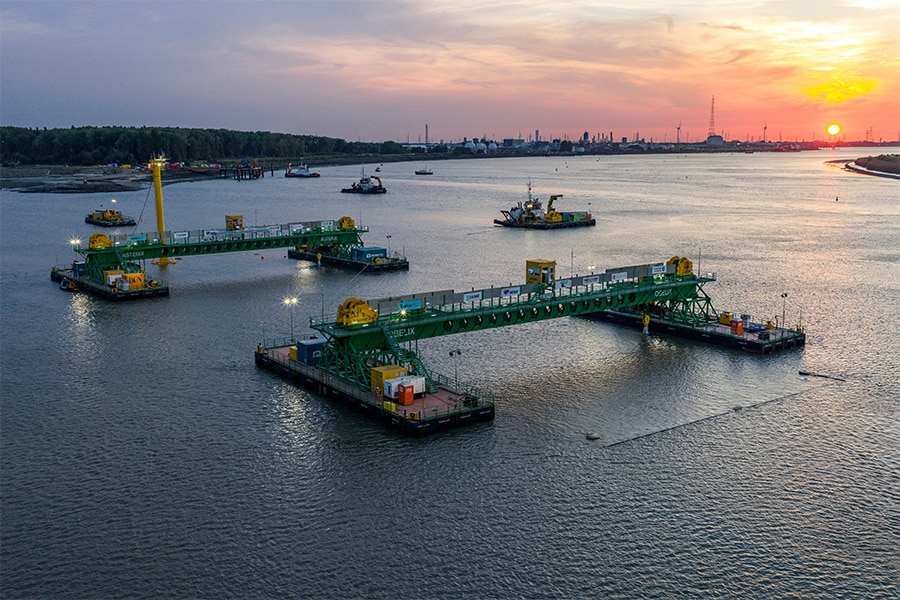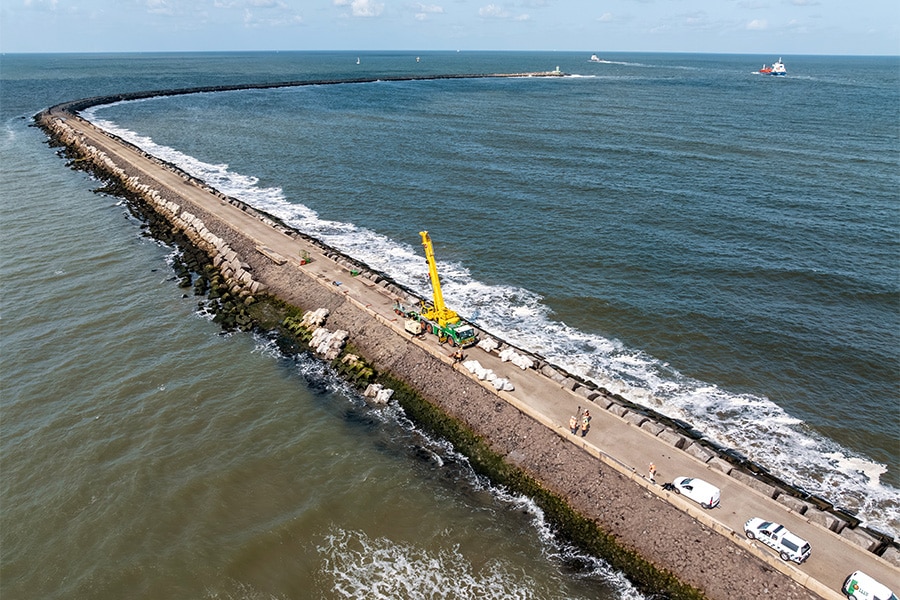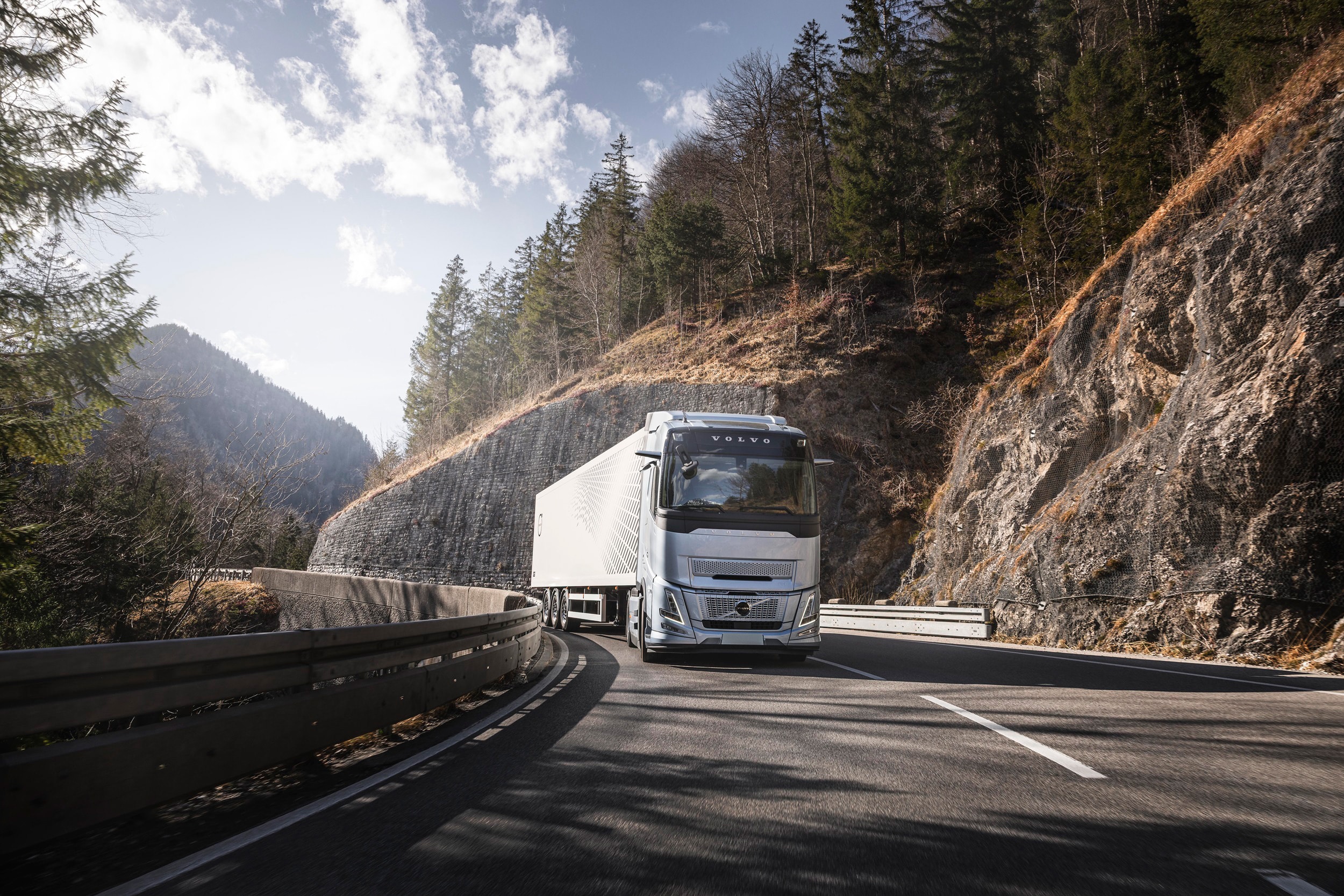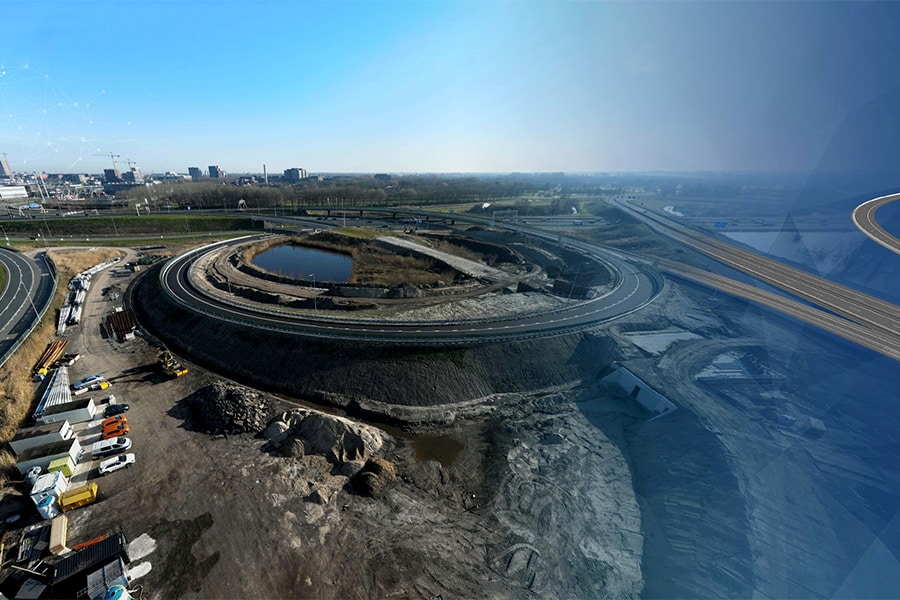
Smart phasing for widening and deepening the A9
For the A9 Badhoevedorp-Holendrecht project, Novis Roads is providing the 3D design for the planning and execution of the road phasing. This means that they determine exactly how the road will be laid out during the works. This is a complex job, involving many parties.
Jan Roelof Leidekker owns Novis Roads together with Remco Kluiver and Wouter Bets. The engineering firm is part of Novis Group whose niche market is large multidisciplinary infrastructure projects that they can execute from start to finish. Leidekker: "There are six of us and we have experience on both the contractor side and the client side. This allows us to switch quickly." Their strength according to Leidekker and Kluiver is that they work according to the BIM methodology. "By making sure at the front that you quickly understand the client's demand, we can think carefully about the desired output, we know what data are needed and we can then visualize the whole thing in 3D. A drawing says something, but a 3D image says it all."
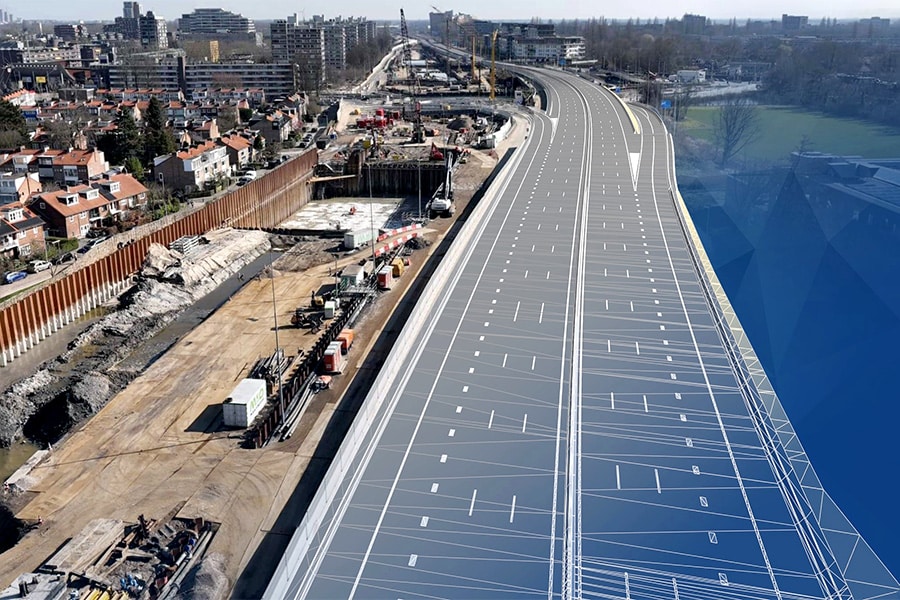
BIM methodology
On behalf of Rijkswaterstaat, VeenIX is widening and deepening the A9 between Badhoevedorp and Holendrecht. During the work on the A9, BIM is an indispensable tool in the design and coordination of the temporary road phases. Because traffic on this busy highway must continue to move during construction, complex traffic situations are being phased. These include temporarily narrowing lanes, lowering the speed limit and shifting the main carriageway to create space for work on bridges, viaducts, the deepening and widening of the highway. These phases will be fully worked out in a 3D BIM model, in which the road design will also be integrated. Kluiver: "The project is divided into three subareas - west, middle and east - each with its own phasing strategy. That offers flexibility: delays in one area do not directly affect the other." The 3D model allows traffic situations to be tested in advance for feasibility, safety and interfaces - both above and below ground. "We identify bottlenecks as early as the design phase and can solve them in a timely manner, so that design, implementation and the environment fit together seamlessly."
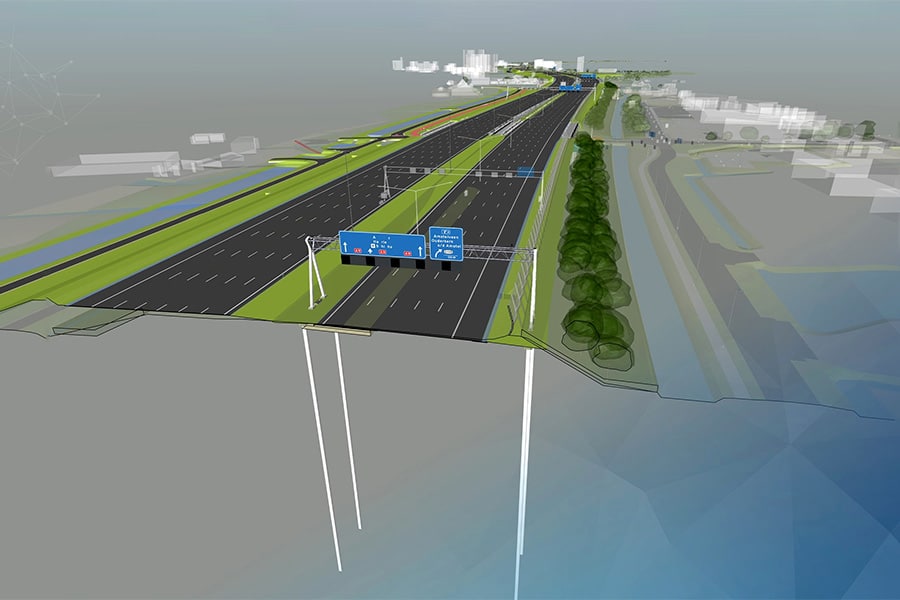
The necessary challenges
The project is particularly challenging for Novis Roads. First of all, the location requires the necessary puzzling and thinking. "We are in fact working on postage stamp size, especially if you look at the stretch near Amstelveen where we came up with an entire bypass. After all, we built a temporary A9 here on the south side of the A9. We also have to take into account the interests of the various stakeholders such as Schiphol Airport, the Amsteldijk golf course, the Rijnland Water Board and the various municipalities. And the pressure is high because, during a closure, you want to get as much work done as possible in a short period of time. All this requires good cooperation and coordination. Not only with colleagues responsible for work preparation and execution. But also with the road authorities, Rijkswaterstaat and various municipalities." The coming period is all about converting the current situation to the final situation. "Normally you go from phase A to phase B, but here we go from A1, A2, A3, A4 until we get to B once. The phases we put on the road now, we want to set up in such a way that later everything is final and all we have to do is move the white lines. To build this with as little temporary work as possible and with minimal weekend closures is the biggest challenge for us in the coming time."
Proud
Kluiver and Leidekker have been involved in the project since the tender. When asked what they are especially proud of, Kluiver replied, "In 2018, we started with sketches on paper during the tender. If you look at what we've built so far, it's still as we conceived it at the time. Moreover, for us as Novis Roads, this was our first major infrastructure job. That it has all gone well so far is also definitely something we are very proud of."
